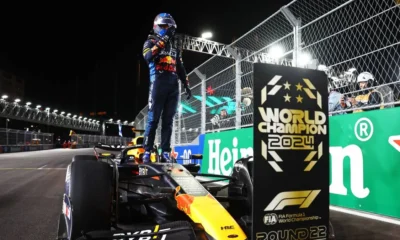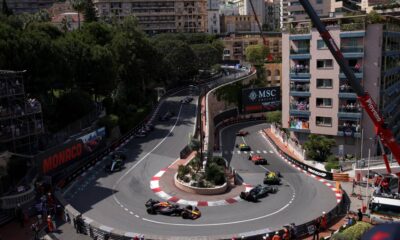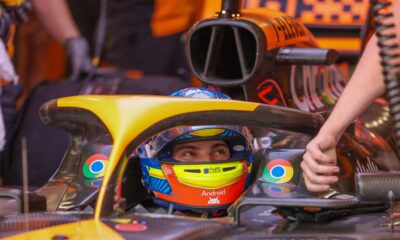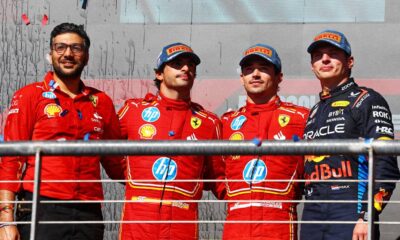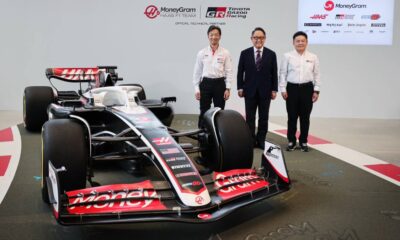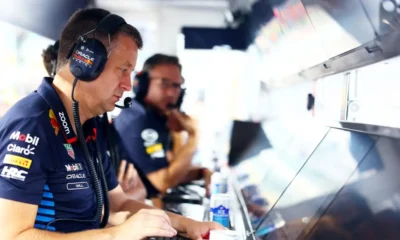Motorsport
A temple of speed, a legend and a mighty killer: Monza is a testament to the Italians’ traditional temperament and inerrancy. What is its story?
A legend among circuits – this is Monza, Italy. It has been through a lot in its history, and it is here that the Italian spirit is quite evident. Monza is also a story of how inexperience kills when, despite the obvious risks, it was still raced in totally unsuitable conditions.
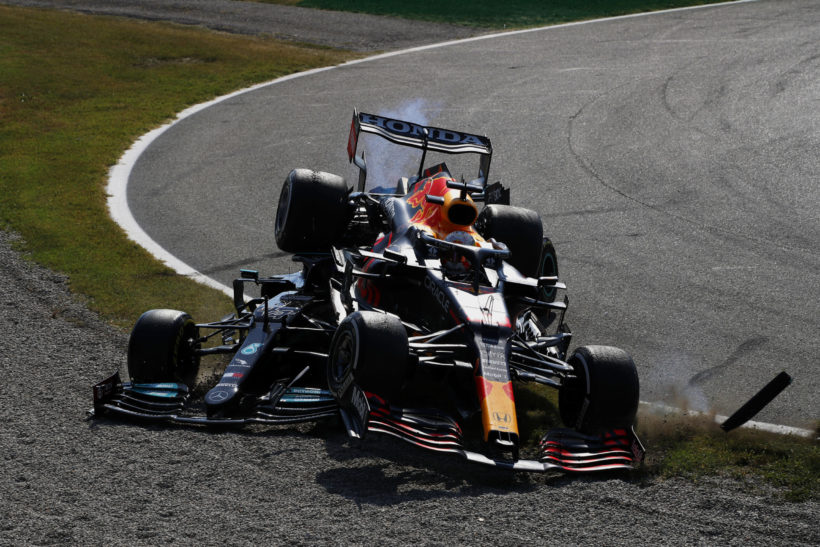
A legend among circuits – this is Monza, Italy. It has been through a lot throughout its history, and it is here that the Italian spirit is quite evident. Monza is also a story of how inexperience kills when, despite the obvious risks, it was still raced in totally unsuitable conditions.
The Italian Grand Prix has been on the Formula One calendar since the official World Championship was founded in 1950. Although Monza opened its doors on 3 September 1922, a week before the first race was held at this venue.
The circuit itself was built in 1922 and in just 110 days. After Brooklands in the UK and Indianapolis in the USA, it was the third race track to be actually built for racing. The race at Monza in Italy is undoubtedly one of the most legendary that F1 has to offer today.
It should be added, from 1950 to the present day, Formula One has never missed the Italian Grand Prix.
1922 – Construction of the circuit completed, first final product
The circuit was built in the Royal Park, north of Monza, in the spring of 1922. The original plans called for construction, but for which a large number of trees and greenery would be removed. In the end, a compromise was made, upgrading several other roads connecting to the roadways and building an expressway oval.
The speedway was completed in 110 days and 3,500 workers worked on it, with most of them concentrating on the construction of the oval. The final product was a ten-kilometre long track combined oval and “classic” upgraded road. Riders started their fast laps on a 100 metre wide straight, then descended to the Curva Grande curve and continued onto the road circuit.
After passing through one of the large banked corners, the cars followed to the semi-circular and also banked Corvette, which was located slightly north of the current Parabolica turn. The pilots then returned down that wide straight (from the right side) and just past the pits entered the first of two very long 180° turns, banked for higher speed, one of which was crossed over the road by a small bridge.
The cars came out of the second banked turn, this time again on the left side of the aforementioned straight, to complete the lap.
A great tragedy, the death of the pilot and several fans
Two pilots died at Monza in 1923, and one more a year later. However, the biggest disaster at the circuit came in 1928, when pilot Emilio Materassi suddenly jerked the steering wheel to the left on lap 17 on the main straight. His car subsequently managed to jump over a 4 metre wide ditch that had been placed there to protect the spectators. However, Materassi crashed into the grandstand and 27 other fans died that day.
More than 100 were injured. This horrific accident was probably the second biggest tragedy in motorsport history after the events at Le Mans in 1955. The Italian Grand Prix was suspended until 1931.
Many modifications
Throughout its history, of course, Monza has undergone many modifications. The race returned to Italy in 1931 thanks to the European Championship, and in addition to the full circuit, a shortened version of the track called the Florio began to be used. It was 6.662 kilometres long. Just a year later, however, Monza forced further changes.
This was due to the so-called Black Sunday. Three riders – Giuseppe Campari, Baconin Borzacchini and Stanislaw Czaykowski – were killed on the wet track during the afternoon race that year. So in 1934, race organizers came up with a concept called the Mini Florio, adding chicanes at each of the fastest corners.
This shortest version of the circuit was 4.329 kilometres long. However, the major reconstruction of the circuit came immediately after the race in 1938, or rather exactly when construction work began. At the behest of the organisers, engineer Aldo di Rionzo drew up plans to make Monza both safer and more challenging for the drivers. The first changes were the demolition of the old banked corners.
Lesmo corner was also modified, Curva del Vialone was moved to the south-west and completely redesigned. A new back straight was built, parallel to the old one but about 50 metres to the west.
The front straight was thus two kilometres long and the cars could reach speeds of 250 kilometres. A secondary circuit was also created during this period, at the request of Pirelli for tyre testing. The new main circuit was to host the Italian Grand Prix for the first time in 1939, but was still not completed. After the start of the Second World War, however, there was no further race.
The post-war period, massive repairs
The Second World War was not kind to Monza at all. Much of the surface was broken by tanks and other armoured vehicles, and the grandstands were also badly damaged. In 1947, it was decided to rebuild the track according to the 1938 plans. Work began in 1948 and the Italian Grand Prix returned to the circuit in 1949. This version of the circuit was raced until 1954.
However, the Italians could not bear the thought of a faster race circuit in the world, so in 1954 they began construction of a new oval. However, the concrete pillars were not what could support the level of world class racing, and so the track buckled in many places. This presented a number of problems, whereupon Monza reverted back to its classic 5,750-kilometre circuit after the 1956 race.
But the organisers had another trick up their sleeve. In an attempt to justify the oval track and recoup some of their investment, they created an event called the Race of Two Worlds. The idea was to hold a Formula Libre race that used only the 4.248-kilometre oval circuit. However, these events were not successful and after 1958 the organisers discontinued it.
The unteachable Italians?
However, despite the obvious dangers of the oval, races were again held on the full circuit in 1960 and 1961. But the new cars (1950s – the rear-engine revolution – ed.) had big problems on such a surface, as did their predecessors. Moreover, the track was all the more bumpy. The last straw was when Wolfgang von Trips collided with Jim Clark in a race in 1961, killing himself and 15 spectators.
So Monza reverted back to a 5.75km circuit after 1962, and organisers spent more time working out how to improve the track than trying to build something grandiose. Above all, they focused on the safety of the circuit. So more chicanes were added to the Italian circuit and the length of the track was increased or decreased only slightly.
So in 1972, the Variante Ascari section was created at Monza. At the start of the 1976 season, the pit lane was extended, and a new section of corners called Variante Rettifilo was also created, which the drivers entered immediately after the start. After the tragic events of 1978, further changes were made, such as the extension of the pit lane and the addition of various safety features.
This configuration remained unchanged for 17 years, with only the introduction of somewhat more fundamental changes to the north-eastern part of the circuit in 1995. The organizers slowed the Lesmo turns and, failing the removal of many trees, the straight between the two corners was shifted a few meters to the west. The Variante della Roggia was also moved a few metres to the west and the overall length of the course was reduced from 5.8 to 5.77 km. Despite the slight shortening of the course, lap times increased by about two seconds.
Autodromo Nazionale Monza
The year 2000 brought us the last major change to the circuit so far. The old Variante Rettifilo double chicane was gone and replaced by the new Primo Variente. Several other corners were then renamed, with this change adding another second per lap in terms of time.
Today, the Monza circuit looks exactly like this. Despite significant modifications throughout its history, drivers still run at full throttle 80% of the time on this fast Italian track.
The track itself is 5.793km long and consists of eleven corners. The Autodromo Nazionale Monza, as the official name of the circuit goes, offers two DRS zones. The first is located on the straight between turns 7 and 8. The FIA has placed the second DRS zone in the start and finish area.
There are also two detection points on the track. The first one can be found at the entrance to turn 7, the second one before turn 11. Rubens Barrichello holds the fastest lap on this track, having set a time of 1:21.046 in his Ferrari in the 2004 season. Michael Schumacher and Lewis Hamilton have recorded the most victories here, with both champions winning a total of five times.
Source

